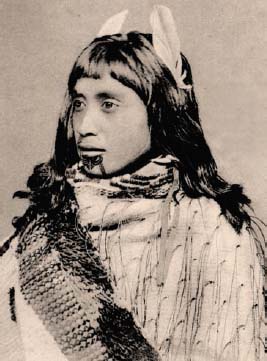The Modern World During and After the World Wars, C. 1914–1960Pacific Art |
What is the significance of tattoos for Pacific cultures? |
Tattooing was, and continues to be, an important part of cultural and religious tradition throughout the Pacific, especially in Polynesia and New Zealand. The English word for tattoo even comes from the Polynesian word tatau. Body art, including clothing and jewelry, as well as tattoos, indicates status, with specific patterns associated with particular ranks within a society. Tattoo designs were usually geometric. The Maori of New Zealand, whose word for tattoo is moko, have separate tattoo styles for men and women, and tattoos of different meanings were placed on different parts of the body. For example, tattoos on the right side of the face represented social status and lineage handed down from the father’s side of the family, while tattoos on the left side on the face communicated maternal lineage. Bodies of the most prominent members of society could be completely covered in tattoos. After a period of decline, tattoos are once again being used to communicate status and cultural identity among the Maori of New Zealand.

Tattooing has been an important part of Maori culture for hundreds of years. Specific tatto° patterns on certain parts of the body serve as marks of rank and achievement within Maori society. (Art courtesy Private Collection /Prismatic Pictures / The Bridgeman Art Library:)
